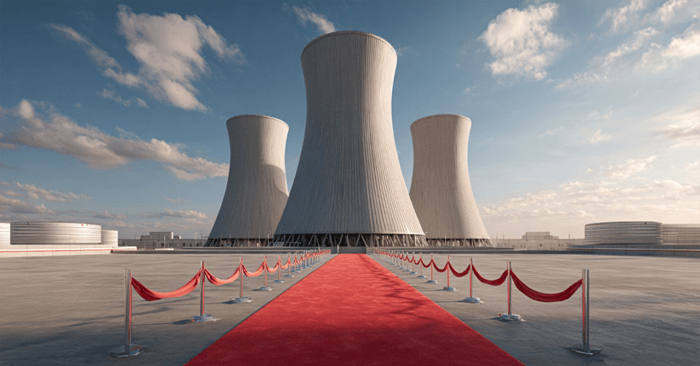
“Something big is underway…”
In my May 21st issue of The Bleeding Edge – A Cover Story for xAI, I put my readers on alert to something fishy happening…
In that issue, I referenced an obscure announcement that had slipped through the cracks of the mainstream news outlets. “xAI, TWG Global and Palantir Unite to Redefine Financial Services through Enterprise AI” was the title of the press release.
The announcement made no sense whatsoever.
It read like marketing fluff – the kind of announcement that I’d typically dismiss quickly and move on.
But with xAI and Palantir (PLTR) involved, and TWG Global – which literally didn’t exist a couple of years ago – it was just too strange to ignore. I suspected something was going on…
After a lot of research and thought about the announcement, it was clear that it was a cover. A smokescreen for the true story, which I suspected was about the adoption of xAI’s artificial intelligence (AI) – soon to be artificial general intelligence (AGI) – by the U.S. government.
In The Bleeding Edge, I pointed out the following:
Here’s what the parties will actually bring to the table:
- xAI will bring both agentic AI and AGI.
- Palantir has all the “hooks” into the allied defense and intelligence systems and databases around the world.
- TWG Global had hundreds of billions of dollars of “connections” and influence around the world through Guggenheim, as well as large equity positions in some of the most important private defense tech and AI companies through Tull’s venture fund.
I went further and made the point that:
Disguising xAI in this enterprise partnership for financial services to give xAI access to all of those “hooks” that Palantir has in defense and intelligence is a very clever play. It made everyone yawn and move on to the next story.
Now, it all makes perfect sense.
Then came along yet another “cover” story…
Here’s another press release. This one came in late June… “Palantir and The Nuclear Company Partner to Launch Platform to Rapidly Scale Nuclear Deployment.”
I shook my head at this one, as well.
Like the xAI, Palantir, and TWG Global deal, it too reads like a bunch of marketing fluff.
Palantir has very little sector expertise in nuclear energy, and yet it is announcing that it will co-develop a Nuclear Operating System (NOS) as the “first AI-driven real-time software system built exclusively for nuclear constructions.”
Specifically, Palantir will apply its AI software to:
There are at least several companies in the industry that are capable of doing the same things, and some are already doing some of them.
And then there is The Nuclear Company, Palantir’s partner, which it self-proclaims “is leading gigawatt-scale deployment of nuclear power across America.”
Except there is one problem.
Like TWG Global, The Nuclear Company didn’t even exist two years ago.
Better yet, its first major funding round, its seed round, raised just $17 million less than a year ago. How could it possibly be “leading gigawatt-scale deployment of nuclear power in America?” It’s not. And it can’t.
The company is just getting started. I hope it has a bright future ahead; I like the mission. But it has a lot to prove before it can make a claim like that.
So why would Palantir – now a $367 billion company with $5.4 billion of cash – partner with a company like this? It could have had its pick of any well-established nuclear energy company in the industry.
Well, just like TWG Global, there are some well-connected people at The Nuclear Company… with the ability to access the innards of the Department of Energy (DoE), as well as raise capital for major nuclear energy projects.
Take a look for yourself…
It might have had a short lifespan, but the team chosen by The Nuclear Company wasn’t a mistake.
Now it’s starting to make more sense…
Earlier this month, the Department of Defense (DoD) granted up to $200 million to Anthropic, Google, OpenAI, and xAI to help the DoD increase adoption of “advanced AI capabilities to address critical national security challenges.”
This was a little too obvious as a cover.
Some of the mainstream outlets saw quickly that the announcement was designed to open the door for xAI’s Grok to be more widely adopted by the U.S. government. Grok 4, which we explored in The Bleeding Edge – Grok Coming in Hot, is smashing the AI leaderboards. It’s a leap ahead of everyone else in the field, a gap that is getting wider. Grok 4 is so good, I’m feeling very comfortable referring to it as xAI’s pre-AGI model.
Then came the big announcement, just last week.
Last week, President Trump set in place the U.S. plan to win the race in AI – Winning the Race: America’s AI Action Plan.

It’s a 20+ page document designed to “remove red tape and onerous regulation,” “protect free speech,” “empower American workers,” and overall accelerate innovation.
It’s worth noting that these deals and partnerships were all announced before President Trump announced the AI Action Plan, which just came out last week.
It’s very clear that these key players have been working closely with the Trump administration, putting their pieces and partnerships together to help the U.S. “win the race” to artificial general intelligence.
They obviously knew what the action plan was in advance, allowing them to position themselves for what’s coming.
In addition to the innovation in AI, the action plan accounts for acceleration in AI infrastructure buildout, which includes data centers, semiconductor manufacturing, and nuclear energy production.
And this is particularly noteworthy: Directly tied to the AI Action Plan is the directive for U.S. government agencies with “significant land portfolios” to identify locations to build AI-centric data centers.
Just last week, the Department of Energy selected the following sites:
They were chosen for very clear reasons: All sites are “well-situated for large-scale data centers, new power generation, and other necessary infrastructure.”
The deals, the partnerships, and the grants all make sense now. It all fits together.
The companies that the Trump Administration is working with are known for disruptive innovation.
They’re known for being able to do things faster than what we’ve grown accustomed to – what legacy incumbent players have so far been incapable of.
This is all about clearing pathways for speed and innovation, and that explains why companies that have a history of disruptive innovation (i.e., xAI/Musk, Palantir, Google, OpenAI, etc.) – as well as brand-new “cover story” companies with access to billions in capital, deep industry knowledge, and the ability to avoid the death trap of doing things “the old way” – are getting involved.
Trump’s AI Action Plan is all about reducing the red tape, accelerating innovation, and making it easier for the rollout of AI infrastructure, specifically for nuclear energy production, data center buildout, and domestic semiconductor manufacturing.
The Trump Administration clearly intends to win the race to AGI, and ultimately artificial superintelligence (ASI), as a matter of national security.
That’s why policy makers, regulators, the executive branch, and private industry are all in sync, and tens of billions of dollars in contracts are up for grabs.
Which deal will be next?
Jeff
The Bleeding Edge is the only free newsletter that delivers daily insights and information from the high-tech world as well as topics and trends relevant to investments.
The Bleeding Edge is the only free newsletter that delivers daily insights and information from the high-tech world as well as topics and trends relevant to investments.